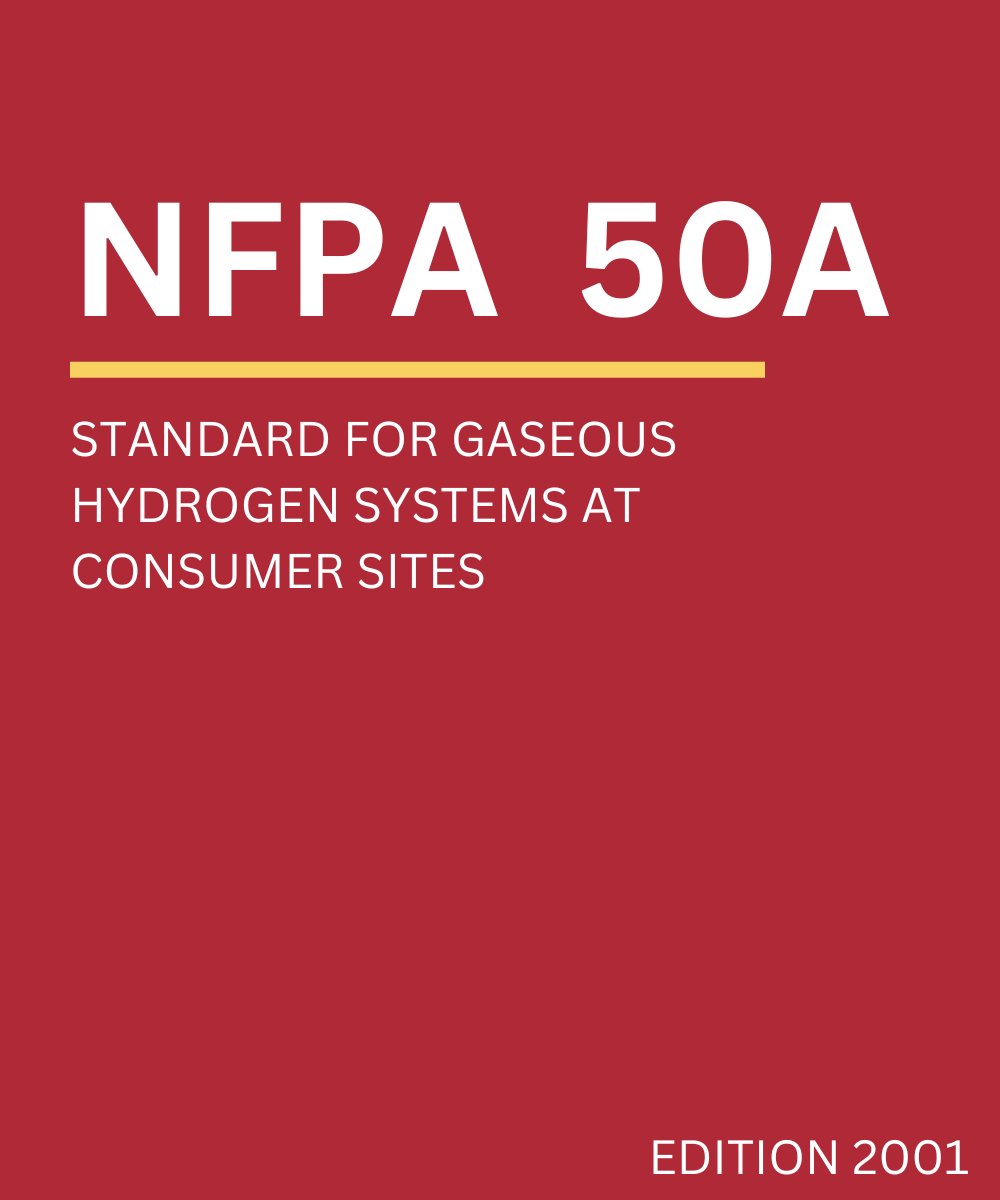
NFPA 50A: Standard for Gaseous Hydrogen Systems at Consumer Sites
The Standard for Gaseous Hydrogen Systems at Consumer Sites provides comprehensive safety guidelines for the installation, operation, and maintenance of gaseous hydrogen systems. It focuses on minimizing risks associated with the storage and use of hydrogen gas, ensuring the protection of people, property, and the environment. This standard is essential for facilities utilizing hydrogen as an energy source, offering detailed instructions to maintain safe and efficient operations.
Current Version: 1999
Revision Cycle:
Fall 2004
Next Edition: Withdrawn
Status: Withdrawn
Introduction
NFPA 50A offers guidelines for the safe installation, operation, and maintenance of gaseous hydrogen systems at consumer sites. These systems are essential in industries that utilize hydrogen as a fuel or industrial feedstock. The 2024 edition introduces updates for improved safety and reliability.
Key Changes in the Latest Edition
- Enhanced Safety Requirements: The 2024 edition strengthens safety protocols for handling and storing gaseous hydrogen.
- Updated Testing and Inspection Procedures: New procedures for regular testing and inspection ensure the integrity of the systems.
- Integration with Other Safety Systems: Clearer connections with other fire protection and safety systems at consumer sites.
Notable Features of the Current Version
- Comprehensive approach to improving safety measures across all phases of system operation.
- Updates to testing and inspection protocols to ensure better reliability and performance.
- Enhanced integration with fire protection systems, improving overall site safety.
Practical Implications
Operators must follow updated inspection schedules and integrate hydrogen systems with other safety technologies to comply with the 2024 edition. This will help mitigate risks and ensure the system’s safe and efficient operation.
Conclusion
The 2024 edition of NFPA 50A improves safety protocols for gaseous hydrogen systems, focusing on their safe integration, testing, and operation at consumer sites. Implementing these guidelines will enhance safety and system integrity.
Access NFPA 50A Now!
For more information, refer to the official NFPA 50A (2024) document or consult with a certified professional specializing in gaseous hydrogen systems to ensure compliance and best practices.
Book a free demo
Digitalize your Inspections with ZenFire
- Faster Inspection
- Deficiency Reporting
- Proposals
Everything you need in one Software.
Company
Support and Services
- (206) 456-8988
- 236 W 27th st Floor 12, New York, NY 10001, United States
- 299 Fremont St APT TH313, San Francisco, CA 94105
- A-302, Nyati Tech Park, New Kalyani Nagar, Wadgaon Sheri, Pune-411014
- hello@zentrades.pro
© 2025 ZenTrades Inc

